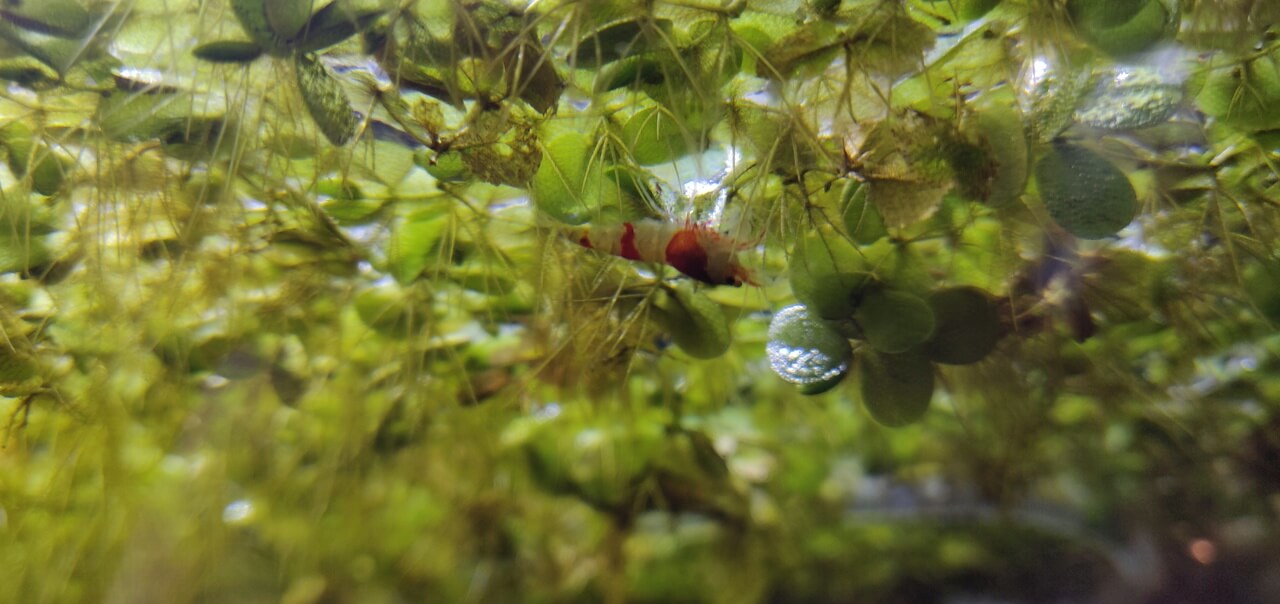Floating plants are a popular addition to shrimp tanks and they have quite a few benefits, besides just looking good.
Benefits
Nitrate removal
One of the most desired features of floating plants is their ability to quickly soak up excess nutrients/nitrates from the water and slow down algae growth.
As they float on the surface of the water they get access to essentially unlimited CO2 from the air, which is like growing submerged plants in a high tech tank with CO2 injection. As a result they grow very quickly compared to other underwater plants, but to do this they need to absorb a lot of nutrients.
Nitrates, ammonia, and any other elements plants enjoy will steadily be decreased, giving you a little bit of background support if you can’t always do frequent water changes. Obviously you should still test your water occasionally - don’t rely solely on plants to keep your water clean unless you know what you’re doing.
It’s a good idea to add floating plants as soon as you setup a new tank so that it can settle in and take some of the excess nutrients away from any unwanted algae, causing it to grow slower or even stop it altogether.
Food
Adding more surface area for biofilm to grow is another useful benefit of floating plants. Biofilm makes up the majority of a shrimp’s natural diet, so giving it the room to expand is very beneficial.
The plants with larger leaves or longer root systems will reward you most on this front, such as Water Lettuce or Frogbit. The image below shows some young Dwarf Water Lettuce roots, which will eventually grow much longer, compared to Salvinia Minima.
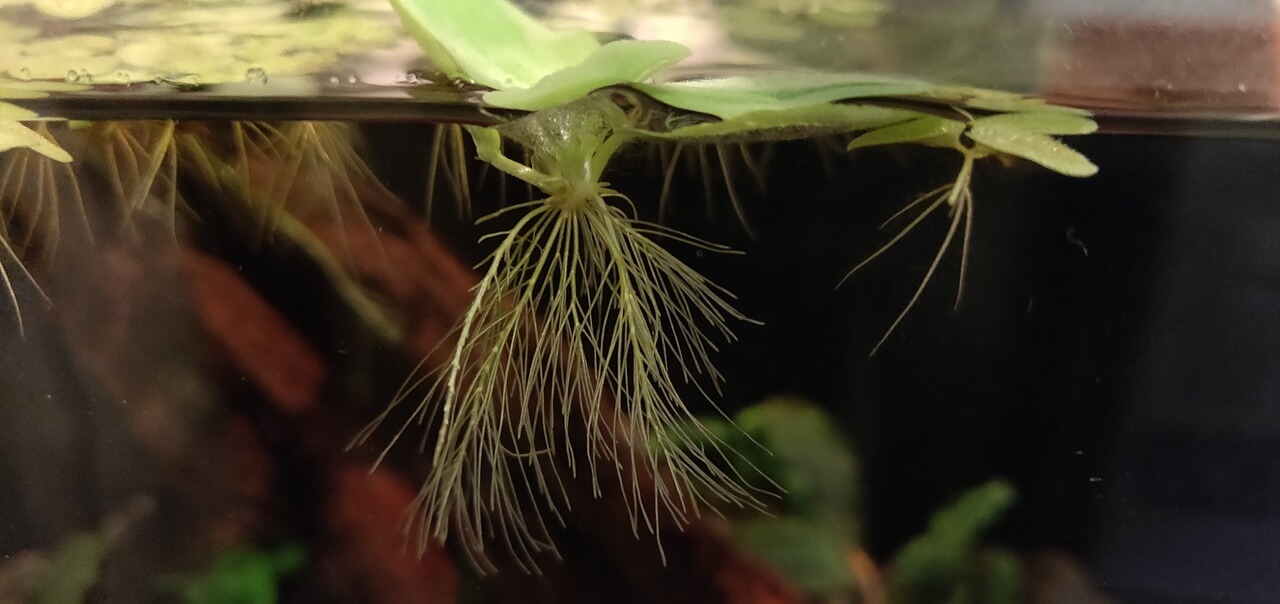
As the leaves die off and decay, your shrimp and snails will also happily devour them, keeping the top of your tank looking fresh and your shrimp full.
Hiding places
Another benefit to the large leaves and roots is that they make for wonderful hiding places. You should try to give your shrimp places they can go to hide so they don’t get unnecessarily stressed, e.g. after molting.
Baby shrimp fry will naturally try to remain hidden amongst plants and rocks for the first few weeks of their lives. Giving them long roots to hide amongst will also make sure they’re able to get enough biofilm to grow up strong.
Female shrimp who have recently molted will appreciate the extra hiding space too, allowing them to get away from the males if they need to.
Easy to manage
It’s super easy to deal with excess growth with floating plants. There’s no worrying about disturbing the substrate or uprooting nearby plants, you simply scoop as much off the top of the water as you like.
Be careful to avoid accidentally catching a curious shrimp though, give it a wiggle on the water surface with your finger before you take it out. Put the to-be-removed plants into another container with your tank water in and double check for shrimp before getting rid of the plants.
Plant species
Salvinia
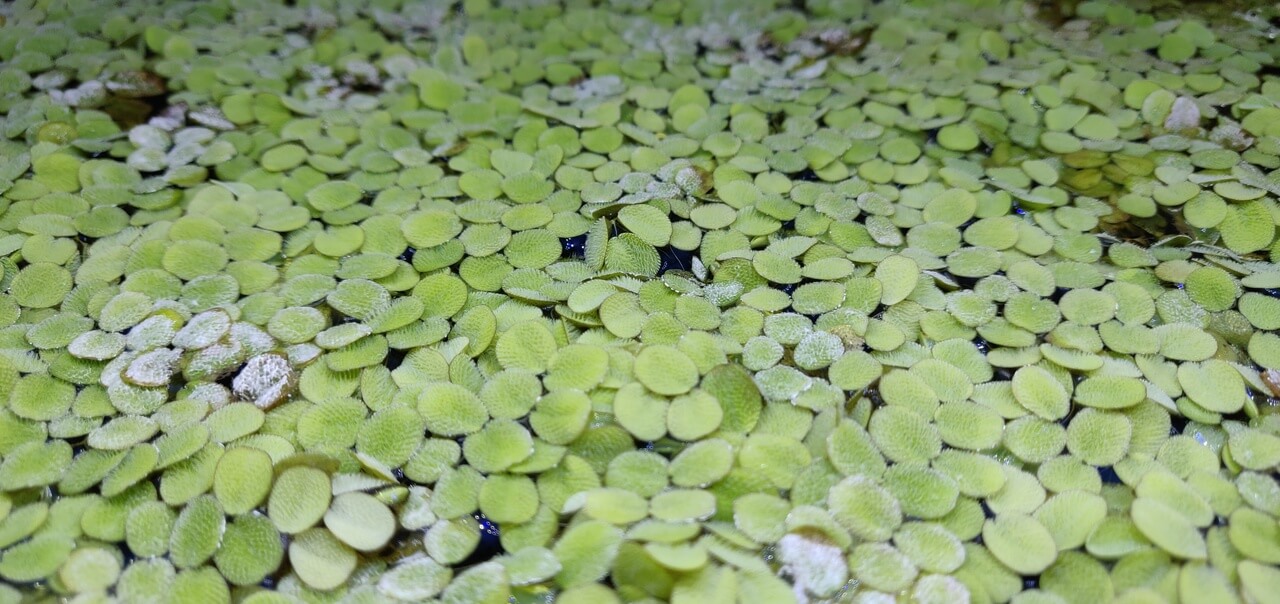
The Salvinia family of plants, also known as water spangles has two main varieties: Salvinia Natans, a larger version with leaves around 1cm long, and Salvinia Minima, with smaller leaves about half the size.
Other than the size these two species look identical, with tiny clear hairs coating their tops, making them look almost fluffy. These hairs help to keep the leaf dry through the magic of surface tension, water droplets roll off the hairs and back into the tank.
The roots are pretty short with relatively few branches too, growing up to around 2cm in length, similar to Duckweed. It’s a moderately fast grower despite the size of the roots and leaves, they still manage to absorb a good amount of nutrients.
Frogbit
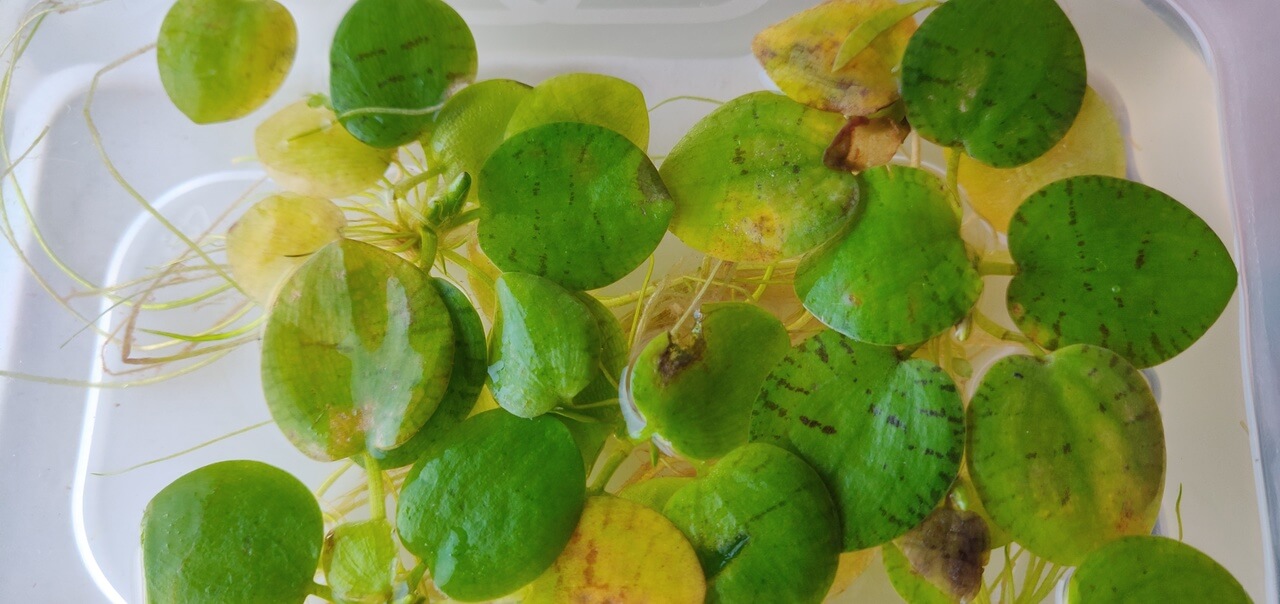
Frogbit, Limnobium laevigatum, looks like a group of small lily pads connected together and has some of the longest roots out of all the floating plants.
The smooth leaves are a deep green in colour which will usually grow up to around 2cm.
Its long, yellow-green roots allow it to grow at a decent pace when given enough light, they’ve even been known to plant themselves in the substrate of tanks due to how long their roots can get.
Water Lettuce
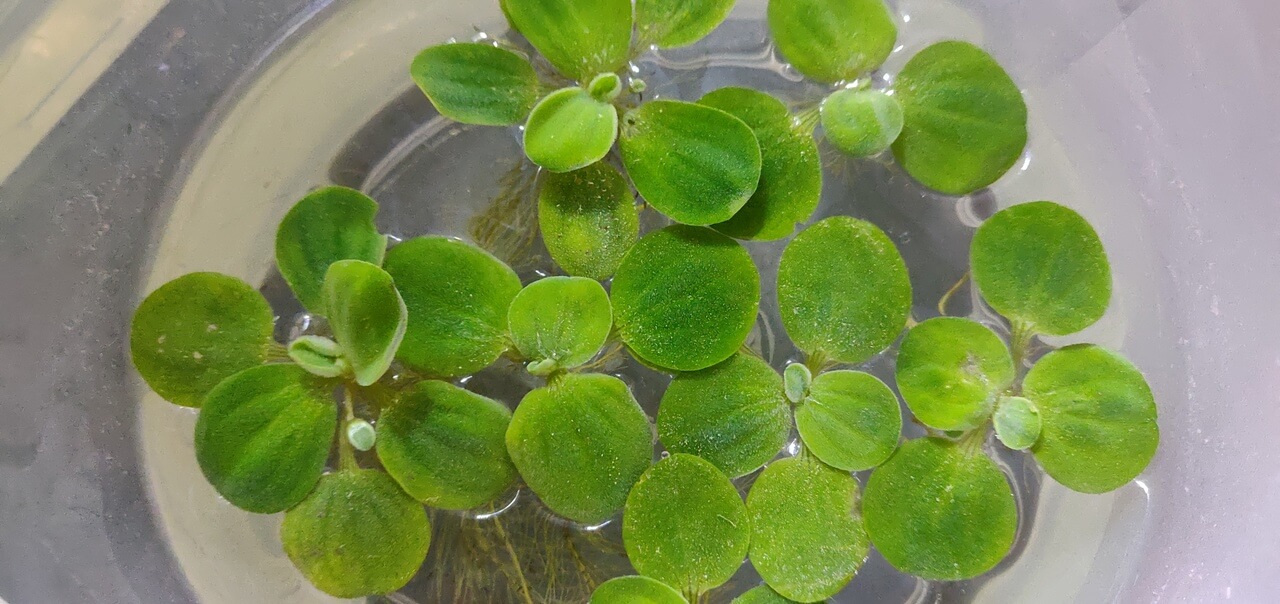
Dwarf Water Lettuce, Pistia stratiotes, is probably the largest floating plant commonly available when its fully grown, reaching over 20cm in diameter. As a result, it’s not too commonly used in smaller shrimp tanks of 10 gallon or lower, but they could work well in larger tanks.
The round leaves are covered in short, fine hairs making its texture look similar to that of velvet.
Due to being on the larger side, it might need more regular maintenance and trimming in your tank compared to some of the other plant alternatives.
This plant does have a slight preference towards softer water but should be fine in anything except very hard water.
Duckweed
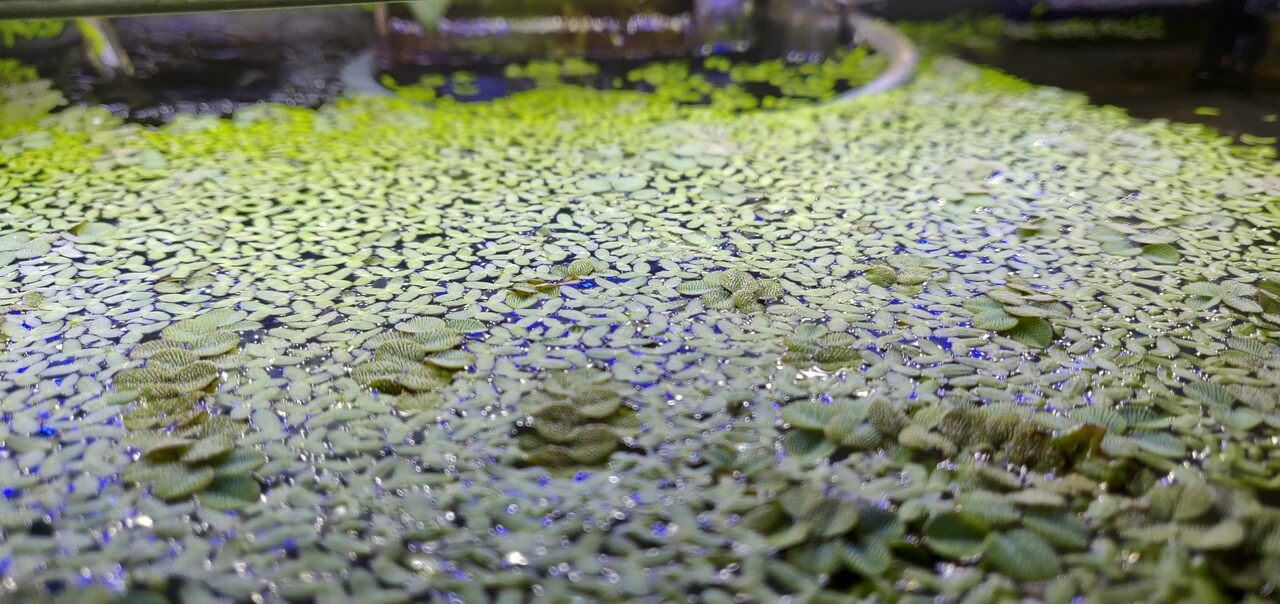
Duckweed, Lemnoideae, is a very well-known floating plant species in the aquarium hobby and its quite divisive as a love-it or hate-it choice.
It’s a very small plant made up of two tiny, conjoined leaves in an almost V-shape connected to a single short root strand that sits below the water.
This plant is perhaps the fastest growing floating plant available when it has the right conditions. Combining its rapid growth with its size can be incredibly frustrating if you decide you want to remove it from your tanks. You only have to leave a single small leaf hidden somewhere in your tank and it’ll start taking over again.
On the flip side of that, Duckweed is a very powerful nitrate remover and definitely a great choice for those wanting to improve their water quality.
Red Root Floater
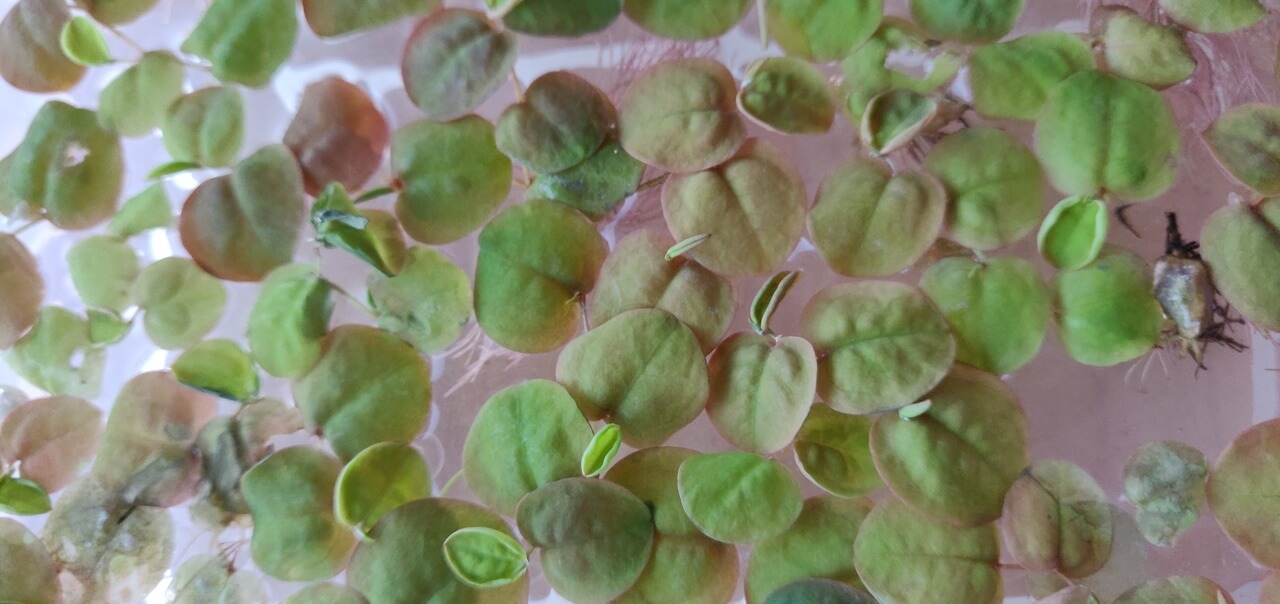
Red Root Floaters, Phyllanthus fluitans, needs no explanation for why its highly desired.
The crisp leaves are fairly small at around 1cm and have a pretty pattern on top. When given a strong source of light, these green leaves turn into autumnal shades of yellow, orange, and red.
As the name implies, not only do some of the leaves turn red but the entire root system can turn a warm pink or red instead of the usual white-green. The dense network of roots makes for a great place to encourage biofilm growth too.
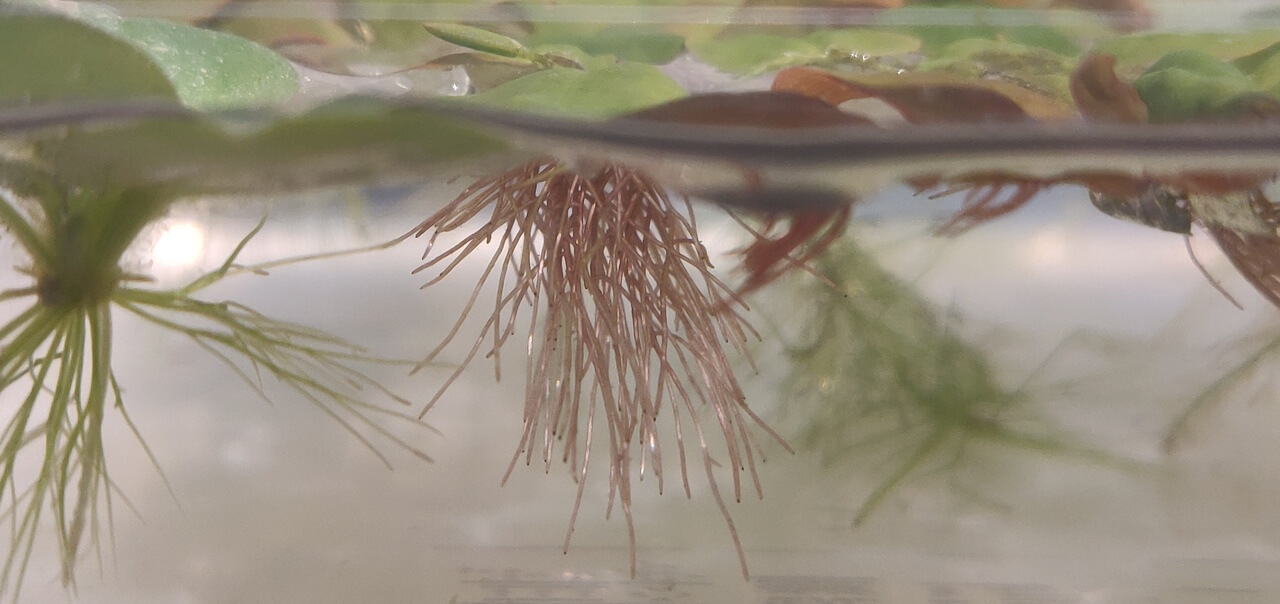
Problems
Pest snails
Unless you got your plants in vitro or from a source that can guarantee no snails, then there’s a chance they could sneak in with your new plants.
Some keepers prefer to add snails to their tanks, but if you’d prefer to keep your tank free of snails for any reason then you should do a bit of preparation before adding your plants.
Rinse your new plants carefully under running tap water, separating any leaves which might be stuck together to try and prevent any snail eggs sneaking in. Quarantine your plants in a separate container filled with tap water for around a day, or a few days if you’re patient.
Afterwards, switch out the tap water with some of your tank water to prevent any chlorine or other chemicals staying on the plants, and leave the plant for a few minutes. Finally move the new plants into your new tank and watch your shrimp express their curiosity.
High flow
One of the most common reasons why floating plants struggle to grow is too much water flow.
Most species will grow best when the water surface is only slightly moving, or almost still. Of course it’s helpful to have your nutrients moving all throughout the water but you don’t want the plants racing across the top.
If you have a powerful or oversized filter then try to reduce your filter flow and see if the plants perk up.
An alternative option is to protect a group of plants with a floating ring made out of airline tubing.
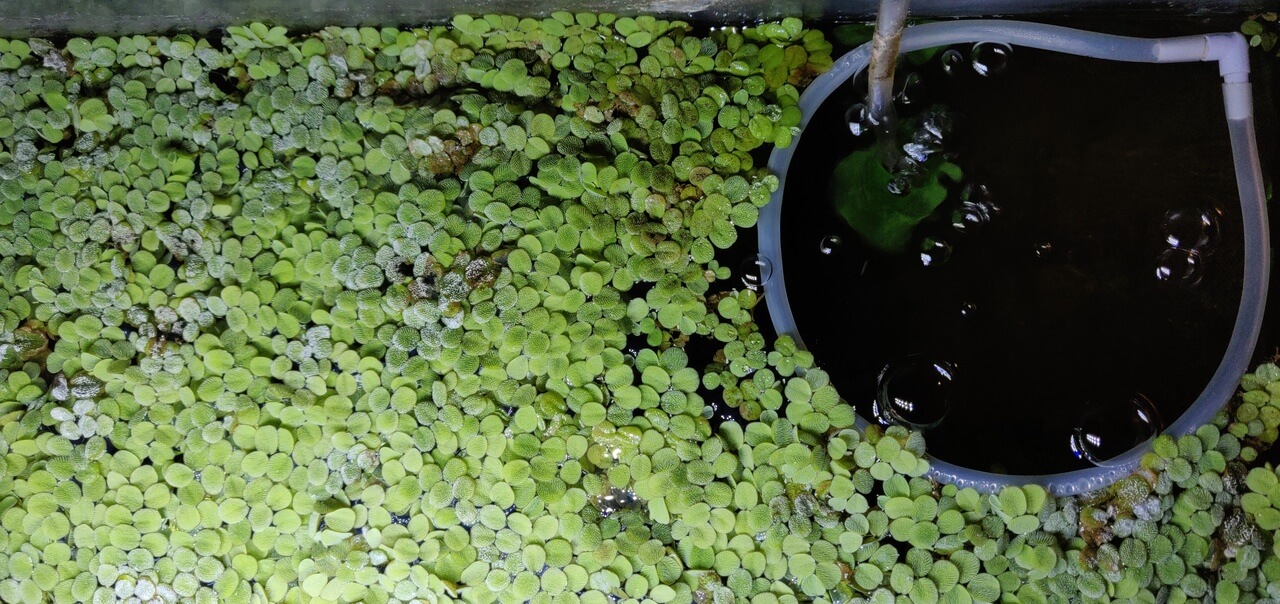
It’s incredibly simple to make: all you need is some airline tubing and a connector. The ring will provide a small buffer against the surface movement and limit how much the plants are pushed around.
Wet tops
The second most likely reason your plants are suffering is that they’re getting too wet. I know this sounds crazy: aquatic plants that don’t like getting wet?!
However, when moisture gets stuck on top of the leaves it can cause them to slowly rot and decay. They have evolved to float on top of the water, not under it.
The waterfall from a HOB (Hang On Back) filter might be plunging the plants straight into the water and drowning them. If this is the case then placing an airline tube ring around the waterfall would add some protection.
Splashing from sponge filters and air stones could also be enough to cause leaf rotting over time. Again, building a border around the source of the water to keep the plants away is a good solution.
Keeping a lid on the tank causes humidity to build up, which is great in preventing evaporation. That said, when the water evaporates and condenses on the lid, the drops will eventually fall back down and potentially land on your floating plants. Combined with the high humidity they will likely decay even quicker too.

